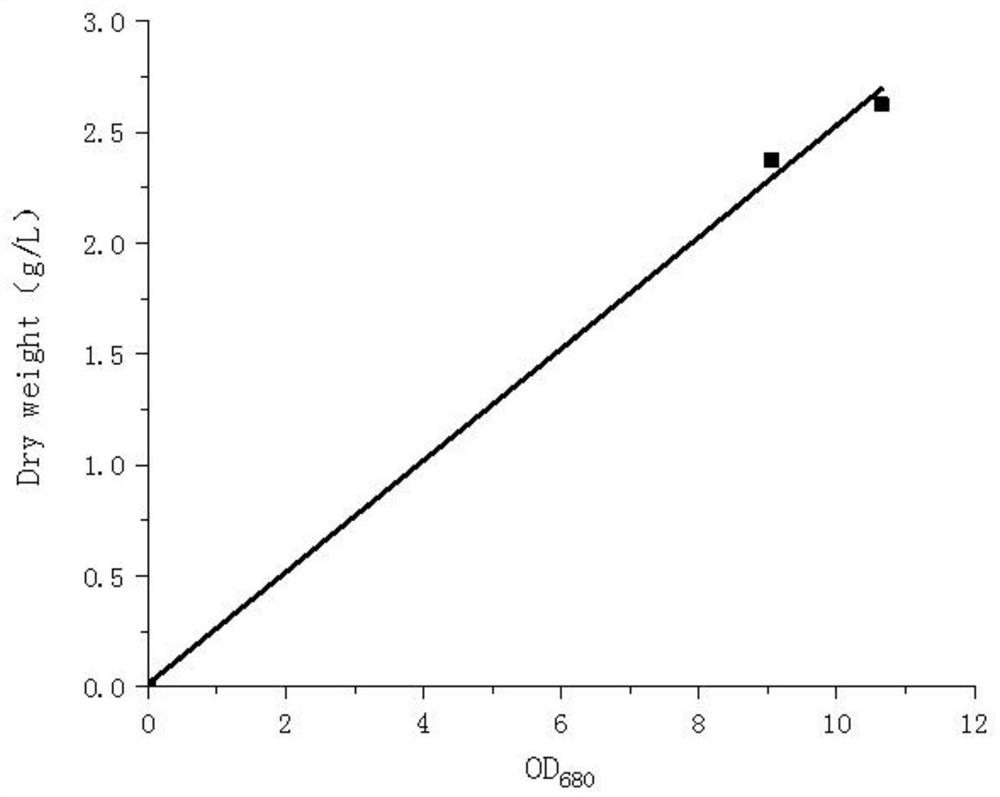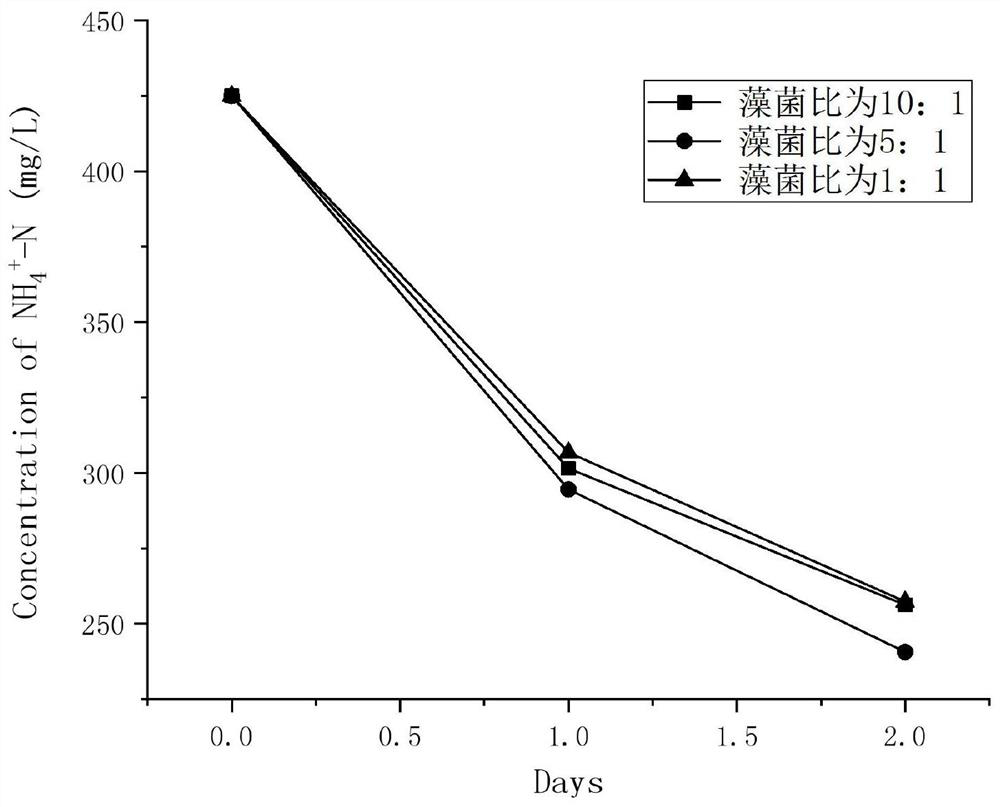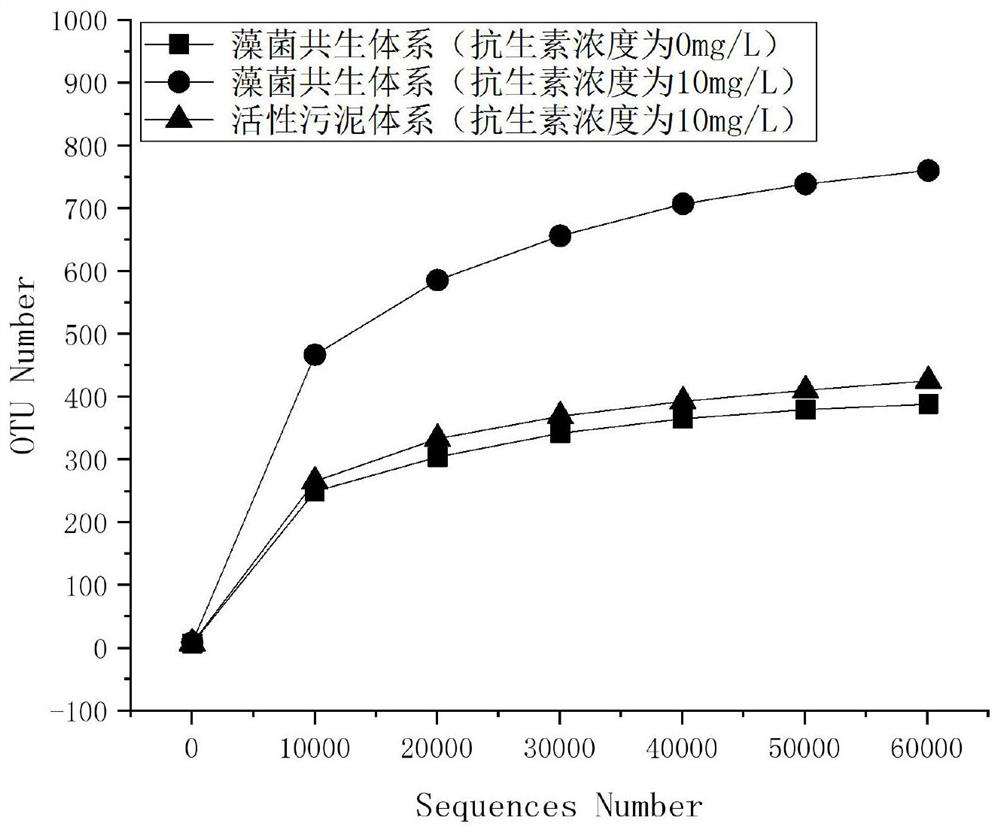Preparation method and application of phycomycete symbiont for degrading culture wastewater containing high-concentration antibiotics and having low C/N ratio
A technology for the symbiosis of aquaculture wastewater and algae and bacteria, which is applied in the field of water treatment, can solve the problems that the treatment process cannot be carried out simultaneously, the process is complicated, and the cost is high, and achieves the effects of good nitrogen and phosphorus removal effect, simple and easy operation, and low preparation cost.
- Summary
- Abstract
- Description
- Claims
- Application Information
AI Technical Summary
Problems solved by technology
Method used
Image
Examples
specific Embodiment approach 1
[0038] Embodiment 1: A method for degrading algae-bacteria symbionts containing high-concentration antibiotics and low C / N ratio aquaculture wastewater according to this embodiment is carried out in the following steps:
[0039] Step 1: Add Chlorella pyrenoidosa to BG-11 medium, then pre-cultivate it in a photobioreactor, and cultivate it to the logarithmic phase, which is the OD on the fourth day 680 The range is 6-7, and the chlorella liquid is obtained; the parameters for pre-cultivation in the photobioreactor are: the culture temperature is 30°C, the culture speed is 200rpm, and the culture light is 200μmol / m 2 / s, the aeration volume is 1.5L / min; the aeration gas is CO 2 Mixed gas with air, the mixed gas is CO 2 The mass fraction is 2%; wherein the composition of the BG-11 medium is shown in Table 1;
[0040] Table 1 BG-11 medium composition
[0041]
[0042]Step 2: discard the supernatant after centrifuging the chlorella liquid obtained in step 1 at 8000rpm for 5mi...
specific Embodiment approach 2
[0049] Specific embodiment two: the algae-bacteria symbiont that degrades the aquaculture wastewater containing high concentrations of antibiotics and low C / N ratio in embodiment one is used to treat aquaculture wastewater containing high concentrations of antibiotics and low C / N ratio. The specific treatment method is as follows:
[0050] Inoculate the algae-bacteria symbiont of the specific embodiment 1 into the culture wastewater to be treated, at a culture temperature of 29-32°C, a culture speed of 200rpm-300rpm, and a culture light of 150μmol / m 2 / s~300μmol / m 2 / s, and the aeration rate is 1L / min~2L / min, and the pH value of the water body is adjusted to neutral every 12h from the inoculation;
[0051] Detection of NH by UV absorption method 4 + -N, get as figure 2 The algal symbiont to NH 4 + -N degradation curve graph from figure 2 It can be seen that on the second day of cultivation, compared with 10:1 and 1:1, the symbiotic system with an algae-to-bacteria rati...
Embodiment 1
[0052] Embodiment 1: A kind of preparation method of degrading algae-bacteria symbiosis containing high-concentration antibiotic and low C / N ratio culture wastewater of this embodiment is carried out according to the following steps:
[0053] Step 1: Add Chlorella pyrenoidosa to BG-11 medium, then pre-cultivate it in a photobioreactor, and cultivate it to the logarithmic phase, which is the OD on the fourth day 680 The range is 6.627, and the chlorella liquid is obtained; the parameters for pre-cultivation in the photobioreactor are: the culture temperature is 30°C, the culture speed is 200rpm, and the culture light is 200μmol / m 2 / s, the aeration volume is 1.5L / min; the aeration gas is CO 2 Mixed gas with air, the mixed gas is CO 2 The mass fraction is 2%; wherein the composition of the BG-11 medium is shown in Table 1;
[0054] Step 2: discard the supernatant after centrifuging the chlorella liquid obtained in step 1 at 8000rpm for 5min, wash the algae cell pellet obtained...
PUM
 Login to View More
Login to View More Abstract
Description
Claims
Application Information
 Login to View More
Login to View More - R&D
- Intellectual Property
- Life Sciences
- Materials
- Tech Scout
- Unparalleled Data Quality
- Higher Quality Content
- 60% Fewer Hallucinations
Browse by: Latest US Patents, China's latest patents, Technical Efficacy Thesaurus, Application Domain, Technology Topic, Popular Technical Reports.
© 2025 PatSnap. All rights reserved.Legal|Privacy policy|Modern Slavery Act Transparency Statement|Sitemap|About US| Contact US: help@patsnap.com



